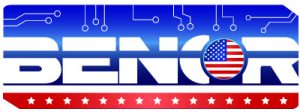The journey of an electronic product, from a spark of an idea to a tangible, market-ready device, is an intricate and often challenging voyage. It’s a path paved with innovation, meticulous engineering, and rigorous testing. In this complex development cycle, one of the most foundational and indispensable stages is the creation and utilization of prototype boards. Often overlooked by those outside the engineering world, a Printed Circuit Board (PCB) prototype is far more than just a preliminary version; it is the crucible where concepts are tested, designs are validated, and potential flaws are uncovered before they escalate into costly, time-consuming problems. Think of it as the essential architectural blueprint and scale model for a skyscraper – attempting to build the final structure without it would be unthinkable. As a dedicated American manufacturer, BENCOR champions this critical phase, understanding that robust prototyping is the bedrock upon which successful, innovative, and proudly US-developed electronic products are built.
What Exactly is a Prototype Board?
At its core, a prototype board is an early-stage, functional model of the final Printed Circuit Board intended for a new electronic product. Its primary purpose is to allow engineers and designers to test, verify, and validate the core functionality of their circuit design, the chosen components, and the overall system architecture in a real-world scenario. While the ultimate goal is to create a board that mirrors the final product’s intended operation, prototype boards often differ in several key aspects from their mass-production counterparts.
For instance, prototype boards might utilize slightly larger component footprints or provide more spacing between traces to facilitate easier manual probing, testing, and rework. They may be constructed with fewer layers or use different, perhaps more readily available or less expensive, substrate materials if the absolute final performance characteristics are not yet the primary focus of that specific prototype iteration. The emphasis is on speed of fabrication, ease of modification, and effective functional testing rather than on ultimate miniaturization, optimized power consumption, or minimized unit cost, which become paramount in later production stages. While very early-stage exploration might involve breadboards or stripboards, the term “prototype board” in the context of professional product development usually refers to a custom-designed PCB, fabricated in small quantities specifically for this validation process.

The Indispensable Benefits of PCB Prototyping
Investing time and resources into developing prototype boards is not an optional step for serious product development; it’s a strategic necessity that yields a multitude of significant benefits. These advantages ripple through the entire product lifecycle, from initial design to final market launch and beyond.
1. Early Design Validation & Critical Bug Detection
One of the most significant advantages of prototyping is the ability to validate the core design and catch errors at the earliest possible stage. There’s a common mantra in engineering: “fail fast, fail cheap.” Identifying a fundamental flaw in a circuit design, an incorrect component footprint, a layout error leading to signal integrity issues, or a simple connectivity mistake on a prototype board costs exponentially less to rectify than discovering the same problem after production tooling is complete or, even worse, after products have reached the market. Prototypes provide a tangible platform to power up the circuit, test its core functionalities, and ensure it behaves as theoretically designed.
2. Component Selection and Performance Verification
Modern electronic designs often incorporate a vast array of components from numerous manufacturers. Prototype boards allow engineers to test their chosen components within the actual circuit environment. This helps verify that the selected parts perform according to their datasheets, are compatible with other components in the system, and meet the specific demands of the application. It’s an opportunity to assess real-world performance characteristics, evaluate thermal behavior, and identify if any components are underperforming or are perhaps over-specified, offering avenues for optimization. This stage can also highlight potential issues with component availability or lead times, allowing for timely adjustments.
3. Facilitating Iterative Design and Rapid Refinement
Electronics development is rarely a linear process. It’s almost always iterative. Prototype boards are the physical enablers of this crucial iterative loop. Engineers can build a prototype, test it, identify areas for improvement or new features, modify the design, and then quickly produce another prototype iteration. This hands-on approach allows for tangible measurement, physical modification (where appropriate), and a much deeper understanding of the circuit’s behavior than simulation alone can provide. This rapid cycling of design-build-test-refine is fundamental to innovation and achieving an optimal final product.
4. Reducing Overall Time-to-Market
While it might seem counterintuitive that adding a prototyping step can speed things up, it absolutely does in the broader context. By identifying and resolving design flaws, component issues, and manufacturability problems during the prototyping phase, companies significantly reduce the risk of encountering major setbacks during pilot production or full-scale manufacturing. These later-stage problems are the ones that cause extensive delays, require emergency redesigns, and can derail launch schedules. A well-executed prototyping strategy ensures a much smoother, faster, and more predictable transition into mass production, ultimately shortening the overall time-to-market.
5. Delivering Significant Cost Savings in the Long Run
The financial benefits of thorough prototyping are substantial. The cost of fabricating a small batch of prototype PCBs and a few assembled units is minuscule compared to the potential costs of recalling defective products, scrapping thousands of incorrectly manufactured boards, re-tooling production lines due to a design flaw, or suffering damage to brand reputation. Prototyping also allows for early optimization of the Bill of Materials (BOM), potentially identifying more cost-effective component alternatives without sacrificing performance, further contributing to a more competitive final product cost.
5. Securing Investment and Stakeholder Buy-in
For startups seeking investment or internal teams pitching new product ideas to management, a working prototype is an invaluable asset. It transforms an abstract concept or a set of schematics into something tangible and demonstrable. A physical prototype that showcases core functionality is far more compelling and persuasive than any paper-based proposal, significantly increasing the chances of securing funding or gaining stakeholder approval to move forward.
Key Considerations for Effective PCB Prototyping
To maximize the benefits of the prototyping phase, several considerations are key:
Balancing Speed and Fidelity: Determine how closely the prototype needs to mimic the final product. Sometimes a quick, rough prototype is sufficient to test a core concept, while other times a higher-fidelity prototype that closely matches final materials and form factor is necessary.
Design for Testability (DFT): Even at the prototype stage, incorporating adequate test points and considering how the board will be tested can save considerable time and effort during validation.
Thorough Documentation: Maintaining meticulous records of each prototype iteration – schematics, layout files, BOMs, modifications made, test procedures, and results – is crucial for learning and ensuring that insights are carried forward.
Choosing the Right Prototyping Partner: Partnering with a Contract Electronics Manufacturer (CEM) that excels in quick-turn prototyping, provides valuable Design for Manufacturability (DFM) feedback even at this early stage, and maintains reliable, quality-driven processes is essential.

BENCOR: Your American Partner for Rapid and Reliable Prototyping
At BENCOR, we understand that the journey of American innovation often begins with a well-executed prototype. We are immensely proud to offer comprehensive PCB prototyping services, supporting businesses across the United States in bringing their electronic concepts to life. Our dedicated quick-turn PCB assembly services are specifically designed to meet the urgent timelines inherent in the prototyping phase, allowing our clients to iterate quickly and efficiently.
(p) We believe that even a prototype deserves the highest level of quality and attention to detail. Our experienced engineering and assembly teams, operating from our facility in Brenham, Texas, apply the same rigorous standards to prototypes as they do to full production runs. This commitment ensures that the prototypes you receive are not only functional but also accurately reflect your design intent, providing reliable data for your validation process. Partnering with a US-based CEM like BENCOR for your prototyping needs offers distinct advantages: seamless communication in your time zone, rapid domestic shipping, robust protection for your intellectual property, and a collaborative approach that feels like an extension of your own team. With our experience dating back to 1992, we often provide DFM insights even during prototyping that can prevent costly redesigns down the line, leveraging decades of American manufacturing expertise to benefit your project from its earliest stages.




